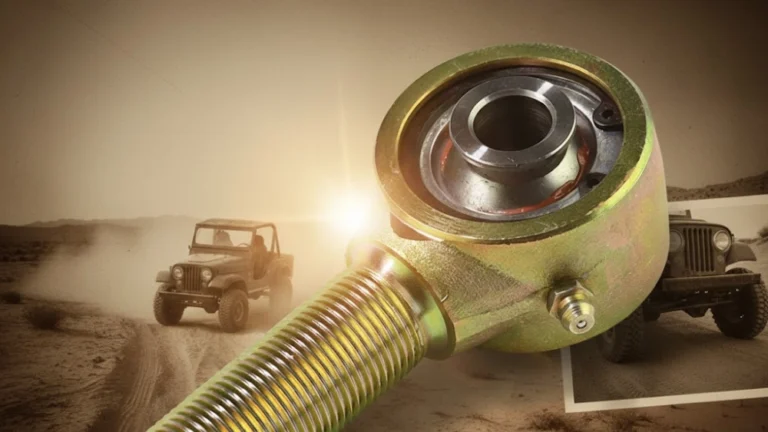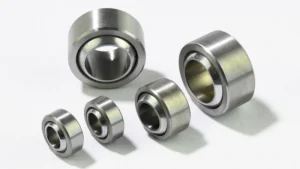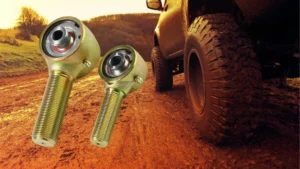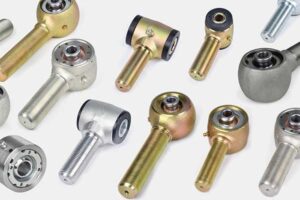Johnny Joint is a suspension joint that was designed to improve the off-road experience by combining the best features of both rubber bushings and metal Heim joints. It offers high articulation for off-roading while maintaining comfort and durability for road use. Invented by John Currie in the mid-1990s, Johnny Joint quickly became a staple in off-road suspension systems. In this article, we’ll take a closer look at the history, invention, and evolution of the Johnny Joint.
Before Johnny Joint Was Invented
Before the Johnny Joint was introduced, off-road suspension systems primarily relied on two main types of suspension joints: OEM rubber bushings and Heim joints. Both had their advantages, but they each had significant limitations, particularly when it came to heavy-duty off-road applications.
OEM Rubber Bushings
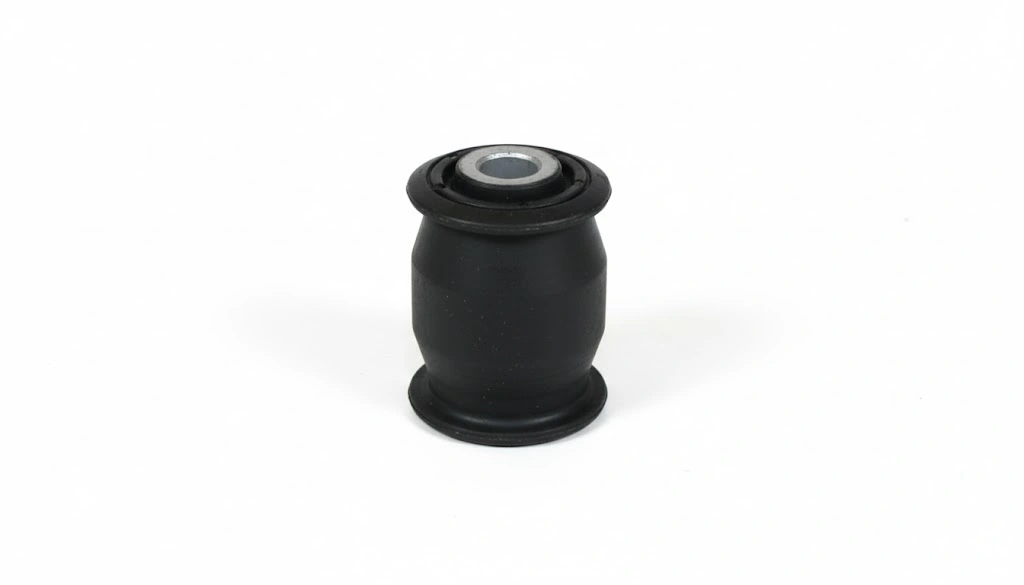
OEM rubber bushings were commonly used in factory suspension systems because they helped absorb vibrations from the road, providing a smooth ride on paved surfaces. They reduced noise, vibration, and harshness (NVH), making them ideal for everyday driving.
However, the main drawback of rubber bushings was their limited articulation. While they worked well on smooth roads, they couldn’t handle the extreme movement required for off-roading. As the suspension flexed during heavy off-road use, the rubber resisted motion, limiting wheel travel and reducing the ability to maintain tire contact with the ground on uneven surfaces. This became a significant issue for off-road enthusiasts who needed more suspension flexibility.
Heim Joints
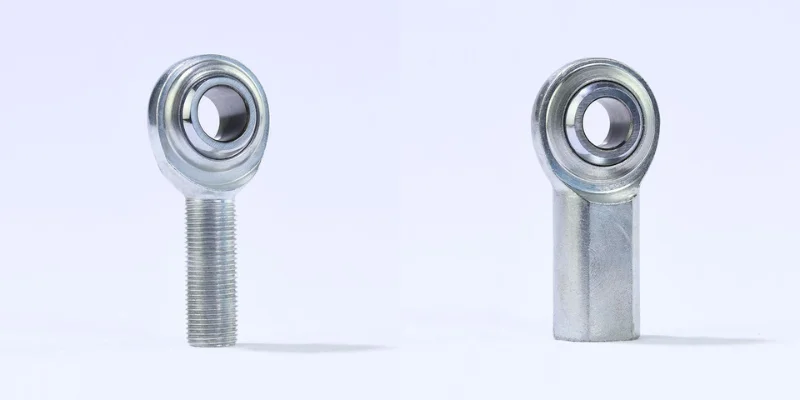
In contrast, Heim joints (also known as rod ends) provided much greater articulation. These metal joints allowed for a much higher range of motion, making them ideal for off-road use where flexibility and movement were essential.
However, the downside of Heim joints was their lack of damping. The metal-to-metal design transmitted all vibrations directly to the vehicle’s frame, making for a rough, noisy ride on paved roads. This made Heim joints unsuitable for vehicles that needed to be comfortable on both highways and trails.
Comparison: OEM Rubber Bushings vs. Heim Joints
| Feature | OEM Rubber Bushings | Heim Joints |
|---|---|---|
| Articulation Range | Limited articulation, restricts wheel travel | Maximum articulation, allows high wheel travel |
| Ride Comfort | Provides a smooth ride, reduces NVH (Noise, Vibration, Harshness) | No damping, creates a rough ride on paved roads |
| Off-Road Performance | Not suitable for extreme off-road conditions | Ideal for extreme off-road use with better flexibility |
| Durability | Less durable under heavy off-road use, prone to wear | Very durable, but metal-on-metal can wear over time |
| Maintenance | Low maintenance, but requires periodic replacement due to wear | Requires regular lubrication and maintenance for longevity |
| Cost | Generally lower cost | Generally more expensive due to material and performance |
The Invention and Design Concept of Johnny Joint
John Currie, the founder of Currie Enterprises and later the President of RockJock 4×4, recognized the need for a suspension joint that combined the best of both worlds: the flexibility of Heim joints and the comfort of rubber bushings. By the mid-1990s, vehicles like the Jeep TJ Wrangler were becoming increasingly popular, and off-road enthusiasts needed a better solution that could balance performance and comfort.
John Currie experimented with different designs, including polyurethane bushings with soft edges and a hard center. But these didn’t provide the unrestricted movement he needed. It wasn’t until one day, on his way to work, that an idea struck him:
“Why not create a joint that works like a Heim joint, but use polyurethane for the outer race?”
This simple but groundbreaking idea became the foundation for the Johnny Joint. The design featured:
- Core: The central component of the joint was a steel ball (pivot ball) that allowed rotational movement.
- Polyurethane Bushing: The steel ball was encased in a custom-molded polyurethane bushing, which provided necessary cushioning and vibration dampening.
- Steel Casing: The entire joint was housed in a durable steel shell, typically made from 4140 chromoly steel, providing strength and longevity.
The image below showcases the components of a Johnny Joint.
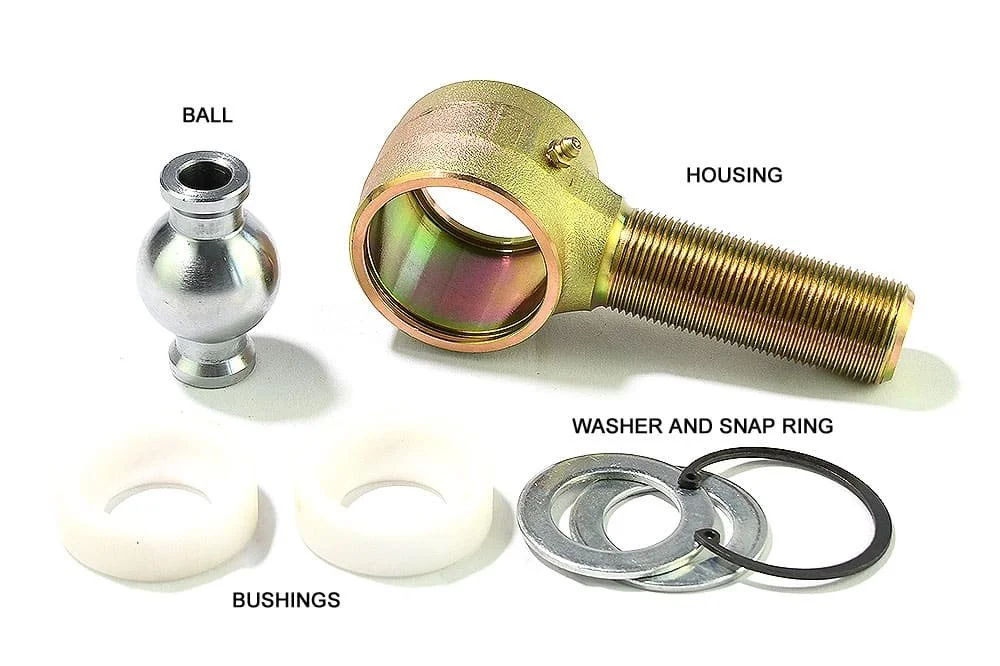
This design allowed for high articulation and a smoother ride, combining the benefits of both rubber bushings and Heim joints. It was a game-changer for off-road enthusiasts who wanted flexibility without sacrificing comfort.
Recommended reading: What is inside a Johnny Joint?
History and Evolution of Johnny Joint
Since its introduction in 1996, the Johnny Joint has evolved significantly. It has undergone continuous improvement to enhance its durability, ease of maintenance, and performance.
Early Design and Improvements
The first versions of the Johnny Joint were made with machined polyurethane bushings and welded threaded studs. Over time, Currie and his team at RockJock 4×4 added key improvements such as grease fittings for easier lubrication and custom-molded bushings for better performance.
Refinements and Modern Features
Johnny Joint continued to evolve with better materials, including advanced polyurethane compounds and stronger steel alloys. The addition of grease fittings made the joints easier to maintain, ensuring a longer lifespan.
Additionally, the design was adapted for various off-road applications, such as 4-link suspension systems in Jeep JK/TJ models, military vehicles like MRAPs, and even high-performance modified vehicles. Johnny Joint’s versatility made it a go-to choice for off-road suspension systems across the board.
Conclusion
The Johnny Joint has transformed off-road suspension systems since its invention by John Currie in 1996. By addressing the limitations of both rubber bushings and Heim joints, Johnny Joint provides a solution that balances high articulation with road comfort. Over the years, it has become a vital component for off-road enthusiasts who demand both performance and durability from their suspension systems. Whether it’s in a Jeep, a race car, or a military vehicle, Johnny Joint continues to deliver the reliability and flexibility that off-road vehicles need.
If you are looking for Johnny Joints to enhance your off-road vehicle’s performance, check this product introduction of our Johnny Joints.


